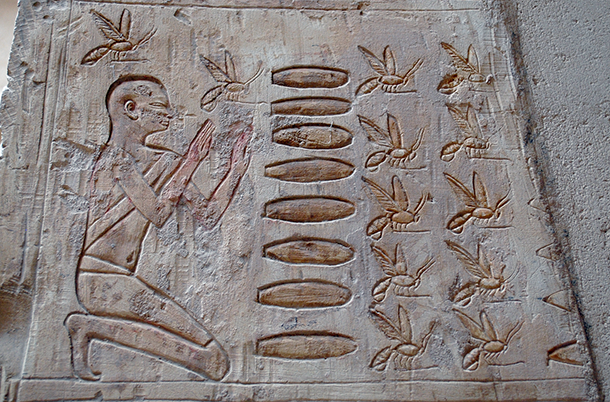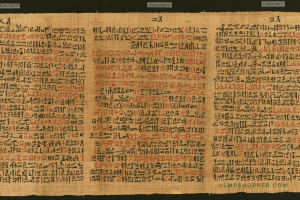Contemporary skincare ingredients and practices date back to antiquity?
By Salomee Khawja
Fungal acne was the bane of Yosef Aydin’s existence as it would emerge periodically but never fully went away.
“I tried all sorts of medications and lotions, but nothing seemed to work,” Yosef, a New York City high schooler, told me. “However, a miracle came by when my grandmother told me her ancient secret, honey. I hadn’t known that my ideal skin was waiting for me in the cabinet.”
Throughout the world, innovations have led Man to resort to Mother Nature’s raw elements. Not only honey but most of our health and wellness antidotes have been more accessible than we have contemplated.
Honey, nature’s most decadent creation, not only is ambrosial, it’s a powerful antioxidant and healer. It’s been used in skin care regimens and treasured for its curative and beautifying properties ever since the dawn of knowledge. Archeologists found that honey was the predominant ingredient in recipes for healing ointments in ancient Sumerian clay tablets.
The word goes around that Cleopatra used to bathe regularly in milk. After all, milk contains lactic acid which helps to gently buff away dead skin cells.
Furthermore, during the Ming dynasty in China, women used rice water to clear away imperfections and inhibit aging. This practice flourished due to the abundance of enzymes, amino acids, and antioxidants in rice.
All in all, skincare has been present for a long time in history, it just has a new name.
Skincare may be the trending cure for beautification, wellness, and health today but truth be told it shouldn’t be novel. Unfortunately, with millennia of knowledge shrouded, many are unaware that this practice has been around since the beginning of time. Furthermore, a substantial amount of ingredients found in contemporary skincare products dates back to antiquity. It’s invigorating to recognize that events of the past continue to prosper, and nothing is ever lost.

Egyptian Honey Beekeepers

Ebers Papyrus
To begin with, one of the first practices of beautification was by the Egyptians, who valued and treasured honey in their medicinal and curative approaches. In the article entitled, “Secrets of the Mummy’s Medicine Chest”, James Peter Allen, an American Egyptologist, asserts “the ancients treated broken arms, cuts, even facial wrinkles […] and they used methods as advanced as rudimentary surgery and a sort of proto-antibiotics.” (Pérez-Peña, 2) Although they didn’t have laboratories or research-based knowledge, they were well-equipped in handling such procedures. In fact, when the 4,000-year-old Egyptian papyrus (also known as the Ebers Papyrus) was found, it offered a depth of wisdom and was anointed as the world’s oldest known medical treatise. According to Allen, who also translated the papyrus, the Egyptians theorized and came to know profoundly about the functions of human anatomy and its cure, though they did not always comprehend it. As per, many of the recipes advise using honey, an antibacterial humectant, in conjunction with willow bark on open wounds, a natural painkiller that is chemically similar to aspirin that can help inflammation. Despite not knowing what bacteria was, they still used herbs and natural remedies to fight it off. Perhaps the most remarkable thing about this is that the practice hasn’t been forgone. Honey is still present in contemporary medicine and skincare products. Moreover, willow bark, known today as salicylic acid, is a common ingredient in modern-day skincare that helps with the alleviation of acne and irritation. On the whole, it’s heartening to acknowledge that years of insight have withstood the test of time.

Egyptian engraving of aloe vera
According to Dr. Alan M. Dattner, a Westchester County dermatologist, many of the colleagues whom he has worked with, recommend their patients’ medications as well as natural approaches to treat their skin. They assert that both approaches are equally significant and useful. In the article entitled, “With Herbs, a ‘Fuller Palette’ for Skin Care”, Dr. Dattner, remarks, “the traditional practice of topically treating dermatological conditions with plant-derived medicines predates the cultures of ancient Egypt and remains vital today.” (Jackson, 5) For example, psoriasis is a condition that causes a person’s skin to become red, itchy, and scaly. This skin disease is often treated with topical steroids, ointments, and sometimes with laser for severe cases. Yet, aloe vera, a standard beauty and health component used to soothe and heal the skin is a great alternative to these approaches. In a clinical study that consisted of patients with slight to moderate psoriasis, patients reported having felt better and were satisfied by the effects of applying aloe vera as a topical treatment. Unsurprisingly, the use of aloe vera was also found written on an uncovered papyrus, describing the plant as “the plant of immortality”. It was named by the pharaoh as the “elixir of eternal life”. It is said that Cleopatra used aloe vera on a daily basis.
Traditions as such are passed down by generations. Our innovations and knowledge have thrived because of our ancestors’ understanding and wisdom. Although we do not continue the archaic practices of our ancestors, it’s interesting to hear the legends of their time. In the article entitled “The Use of Plants in Skin-Care Products, Cosmetics and Fragrances: Past and Present” issued in the Cosmetics Journal 2018, “five thousand years before, the Sumerians, Assyrians, and Babylonians removed skin devils with mud, [ointment, bandages], and plants such as castor oil, anise, cinnamon, myrrh, and mustard.”(González-Minero, 1) In modern-day cosmetic engineering, these ingredients are formulated in various skincare and beauty products. However, nowadays people have access to options such as topical steroids, chemical exfoliants, prescription medication, and over-the-counter lotions and serums. On the surface, it seemed to be peculiar and an odd procedure of beautification. Coming from Assyrian descent, I found this statement bizarre yet amusing. Part of me couldn’t believe the information, so I questioned my grandmother to lessen my doubts.
“We didn’t have the products made today, but we tried everything to look our finest; well, some of us did,” she laughed.
“Myrhh was favored and helpful in reducing irritations all over the body. Your mom frequently got rashes, so I’d apply it to her skin, and after a while, she’d feel better. Pearl powder was another great element we used; it kept us looking youthful and fresh.”
When I asked her if she’d return to such practices, she answered no.
“With the abundance of inventions coming out these days, there is no need to go back to these methods. Simply remembering these methods keeps the practice alive.”
The experience of learning the approaches to beautification through someone of an older time is riveting. It’s a reminder that nothing is ever lost in the past. As long as we have memories of the past, the past lives on.

Contemporary Skincare Routine
At the end of the day, Man has come a long way with research and knowledge. Today we attain a plethora of resources to treat our conditions. So go forth, and use all the incredible skincare products you keep on your shelves. We do not need to regress to old practices, although one can if they desire to. Yet, the alikeness and resemblance of today’s approach to those done in antiquity is a reminder that we remain connected with our predecessors. While skincare is the new beauty trend and wellness movement, one should know that mother Earth initiated it at the beginning of time. Everything we know and attain today is granted due to the years of knowledge of the past. By good fortune, years of knowledge and practices have withstood with time. The parallels found in medicine and health open doors to much more information that is left to be found by intellectuals of the past.
The past dictates the future and the present is in flux.
References:
Jackson, Nancy Beth. “With Herbs, a ‘Fuller Palette’ for Skin Care.” The New York Times, The New York Times, 8 Dec. 1998, www.nytimes.com/1998/12/08/health/with-herbs-a-fuller-palette-for-skin-care.html?searchResultPosition=2.
Pèrez Peńa, Richard. “Secrets of the Mummy’s Medicine Chest.” The New York Times, The New York Times, 10 Sept. 2005, www.nytimes.com/2005/09/10/nyregion/secrets-of-the-mummys-medicine-chest.html?searchResultPosition=8.
González-Minero FJ, Bravo-Díaz L. The Use of Plants in Skin-Care Products, Cosmetics and Fragrances: Past and Present. Cosmetics. 2018; 5(3):50. https://doi.org/10.3390/cosmetics5030050





Leave a Reply